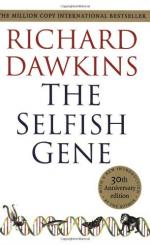
|
| Name: _________________________ | Period: ___________________ |
This quiz consists of 5 multiple choice and 5 short answer questions through Chapter 9.
Multiple Choice Questions
1. In Dawkins' description, how does a retaliator behave?
(a) A retaliator mimics the behavior of the creature it encounters.
(b) A retaliator appears to be a dove but acts like a hawk.
(c) A retaliator appears to be a hawk but acts like a dove.
(d) A retaliator waits to see what will happen and then reacts through a code of rules.
2. What would competition between early self-copying molecules be over?
(a) Water.
(b) Building-block molecules.
(c) Gaseous molecules.
(d) Space.
3. To what does Dawkins attribute changes to female mice as the population rises?
(a) Natural selection of individuals.
(b) Random variation in individuals.
(c) Random variation within groups.
(d) Group selection.
4. Who does Dawkins' idea of AI expand the idea of PI to include?
(a) All related adults and children.
(b) All children in a family unit.
(c) All adult caregivers.
(d) All adults in a species.
5. What does Dawkins describe life forms as?
(a) Projections of self-copying molecules into a new dimension.
(b) Multiplications of self-copying molecules.
(c) Simple enlargements of self-copying molecules.
(d) Machines to protect competing self-copying molecules.
Short Answer Questions
1. What is the most stable result of the specific ESS simulation Dawkins describes?
2. What fundamental question does Dawkins want to consider?
3. What apparently selfish act of gulls does the author describe?
4. According to Dawkins, how might a gene that normally does something selfish end in doing something unselfish?
5. What four categories does Dawkins have in his game theory analysis of male and female sexual and childrearing behaviors?
|
This section contains 377 words (approx. 2 pages at 300 words per page) |

|




